Sahiyo co-founders win Laadli and ShoorVeer Awards in India
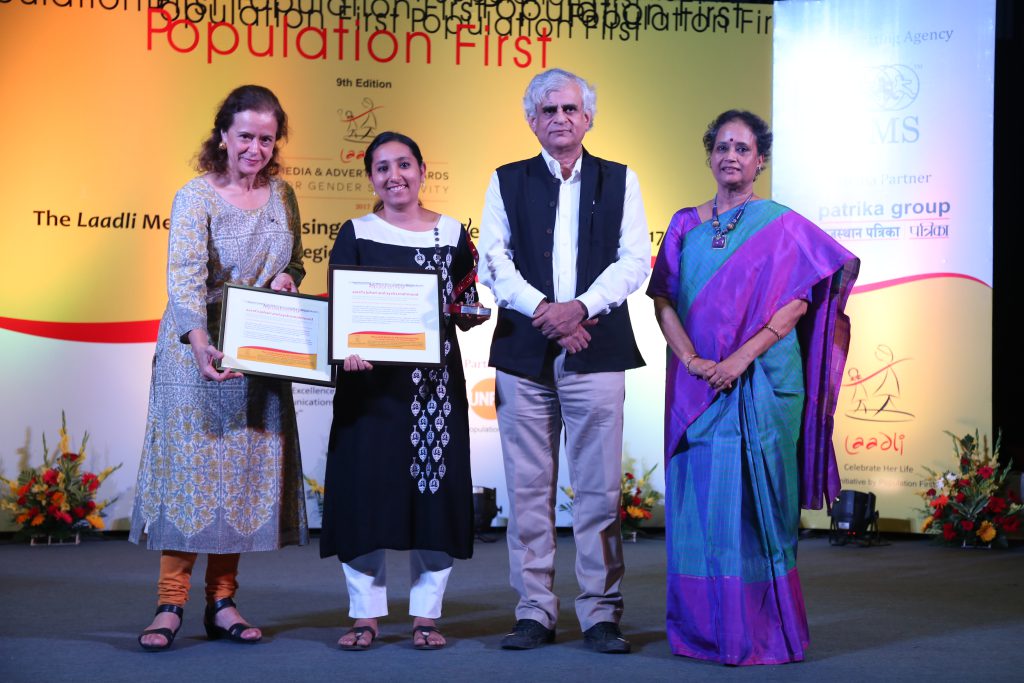
Sahiyo’s investigative report on the previously unknown prevalence of Female Genital Cutting in the Indian state of Kerala won the prestigious Laadli Media and Advertising Award for Gender Sensitivity for the year 2017. The report was authored by Sahiyo co-founder Aarefa Johari and independent writer and activist Aysha Mahmood. Johari received the Laadli award on behalf of both authors at an event in Delhi on September 14 by Laadli’s founding organisation, Population First. Eminent journalist P Sainath was the chief guest at the event. Johari and Mahmood’s investigation uncovered, for the first time, that FGC was being practiced covertly by two doctors in a clinic in the city of Kozhikide (Calicut) in Kerala. The doctors admitted to cutting girls and women of all ages from various Sunni Muslim sects in Kerala. Previously, it was widely believed that the Bohras were the only community practicing FGC in India. (Read the Sahiyo investigation report here.) The Sahiyo investigation caused a furore in Kerala after Mathrubhoomi, a prominent Malayalam newspaper, conducted a follow-up exposé of the same clinic, and published a first-person account of a young woman from Kerala who had undergone FGC as a child. The exposés led to a temporary shut down of the clinic in Calicut where girls were being cut and prompted several religious leaders to publicly condemn the practice. The health minister of Kerala also ordered the state police to take strict action against anyone found practicing FGC. ShoorVeer Awards Sahiyo’s co-founders Insia Dariwala and Aarefa Johari won the ShoorVeer Awards 2018 in Mumbai on August 10. The awards, given by the organisation Ample Missiion, were instituted to honour the bravery and courage of “common men and women who have done uncommon things”. The word “ShoorVeer” is Hindi for a brave warrior. A total of 14 individuals from across India were awarded ShoorVeer awards this year, including two police officers who have excelled in their duties, two children who saved their friend’s life, an amputee sportsman and several women and men working in the fields of education, health, and human rights. Aarefa won the award for her work as a Sahiyo co-founder to end the practice of Female Genital Cutting. Insia’s award was a recognition of not just her work to end FGC, but also her work to raise awareness about child sexual abuse through her organisation, The Hands of Hope Foundation. Insia Dariwala receiving her ShoorVeer Award. Aarefa Johari receiving her ShoorVeer Award.
WeSpeakOut spearheads two-day workshop on ending FGC in India
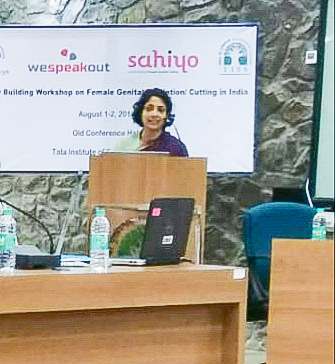
In a unique event bringing together activists working to end Female Genital Cutting and various stakeholders from civil society organisations, WeSpeakOut organised a two-day symposium at the Tata Institute of Social Sciences (TISS) in Mumbai on August 1 and 2. The symposium, titled “Strategy-building Workshop on FGM/C in India”, was organised in partnership with TISS, Nari Samata Manch and Sahiyo. More than 40 activists, survivors, and researchers participated in the workshop, including women and men from various sub-sects of the Bohra community, from different parts of India, feminists, academicians, and heads of several women’s rights and human rights organisations in the country. There were also international participants from Equality Now, a US-based organisation working to end FGC globally and Tasaru Ntomonok Initiative, an NGO working to end FGC in Kenya. Over two days, the workshop nurtured stimulating and productive discussions on various aspects of FGC and discussed strategies to advocate against the practice from the perspectives of law, health, community engagement and working with the youth and with men. The workshop was also an opportunity for activists from the community and those from outside the community to learn from each other.
On The Supreme Court Hearings and The Pro-Khatna FAQs Circulated by Bohras

By Shabana FerozeCountry: Bahrain The Supreme Court of India is very close to deciding a ban on Female Genital Cutting (FGC) or khatna, and I couldn’t be happier. As a survivor of FGC myself (I live in Bahrain but had khatna done to me in a shady house in Hyderabad, India), I want to see this practice legally banned. The Supreme Court observed it goes against the Constitution of India to make any changes to a young girl’s private part. In my opinion, Female Genital Cutting goes against not only the Constitution, but child rights and human rights as well. The argument by pro-khatna Bohras against this is always “religious freedom”, as is evident in the name of the group at the forefront of defending khatna: the Dawoodi Bohra Women for Religious Freedom. What religious freedom? You’re allowed to do anything in the name of religious freedom? I really hope that the Supreme Court rules to have this practice declared illegal once and for all so Bohra moms stop bringing their daughters from all over the world to get a part of their anatomy removed for no reason. But what scares me is that even if it gets banned, the practice may go underground and still continue. A few members of the Bohra community who are pro-khatna (and the Syedna, the leader of the community) vehemently defend the practice, saying that it’s their right to do it, and that parents don’t need the consent of a 7-year-old girl child to make non-medical changes to her clitoris. They also claim that the procedure is done for “taharat” or “religious purity”. There was even a document circulated on WhatsApp recently, called “Female Circumcision, as practiced by the Dawoodi Bohras: Understand it, before condemning it!”. The document is structured like an FAQ, listing all the arguments against FGC and countering them with their supposedly good and right reasons in favour of this practice. This document claims that the Bohra form of FGC is not the same as Female Genital Mutilation (FGM), and that khatna does not cause any physical harm, trauma or even pain. This claim ignores all the personal stories of women who have said that it caused harm, long-lasting trauma, and terrible pain to them (including myself). The authors of the document also state that the World Health Organization (WHO) has “over-reached” in including Bohra khatna in their classification of FGM. Do they think they are smarter than the World Health Organization? They also compare nose and ear piercings to FGC. The document claims: “Nose & ear piercings, a very popular practice world over, is commonly performed on small girls for non-medical purposes. Nose & ear piercings are painful and cause a publicly visible & permanent change on the human body. Yet they are considered perfectly acceptable. On the other hand, female circumcision, which is a mild & harmless practice causing no visible change, is considered to be a human rights violation!” Making a piercing in the cartilage of the nose and ear is very different to cutting off a piece of genitalia. The genitalia is connected to your sexual organs and reproductive system. It’s not a harmless procedure. Nose and ear piercings are harmless procedures, available at hospitals and pharmacies, and are done by trained professionals. The WHO doesn’t have a problem with it. It’s not banned in several countries. So the comparison of nose and ear piercings to FGC/ khatna is not on the same level. Looking at the Bohra community’s arrogant defiance to continue this practice, even in the face of organizations such as WHO, I’m scared that even if the Supreme Court makes it illegal, it will continue to happen. It’ll just be shrouded in more secrecy. The Syedna himself needs to declare it to be an outdated and unnecessary tradition that needs to be stopped. If he doesn’t and it becomes illegal in India, a huge network of home-based cutters might grow, and women might continue to take their daughters, granddaughters and nieces to dark homes in small alleys to get it done.
Indian Supreme Court Offers Hope for Petition Against FGC, While Government Denies its Prevalence

On July 10, judges of the Supreme Court of India observed that the “bodily integrity of a woman” cannot be violated while hearing a petition about Female Genital Cutting. The Court made this observation while hearing the arguments of a petition filed by the Dawoodi Bohra Women’s Association for Religious Freedom, which claims that FGC, as practiced by the Bohra community, is not “FGM” but “circumcision”, and is an essential religious practice that they have the constitutional right to follow. In response to these arguments, made by DBWRF’s lawyer, Abhishek Singhvi, Justice Chandrachud said, “Why should the bodily integrity of a woman be subject to some external authority? One’s genitals is (sic) an extremely private affair.” The judges also observed that the practice cannot be imposed on those who do not want it. This is not the final verdict of the Court, and the hearings in the case on FGC in India will continue. Meanwhile…. On June 27, India’s Ministry for Women and Child Development denied the prevalence of Female Genital Cutting in the country – it’s second U-turn on the issue in the past 13 months. This denial came after a perception poll by Thomson Reuters Foundation ranked India as the most dangerous country in the world for women, based on a variety of parameters that included the practice of FGC. The Indian government responded to this poll by issuing a press release refuting and dismissing its methodology. In the press release, the Government also stated that “Female Genital Mutilation” is “not practiced in India”. This is clearly at odds with the stand that the Central Government took in the Supreme Court just two months ago when it stated that FGC is “already an offence” under Indian law and asked the Court for guidelines on how to tackle the challenge of FGC. This is not the first time that the government has made contradictory statements about FGC. Women and Child Development Minister Maneka Gandhi had first publicly acknowledged the practice of FGC in India, and the need to ban it, in May 2017. In December 2017, however, the Government dismissed the testimonies of several women who have spoken out about their FGC experiences by claiming, in the Supreme Court, that there is no “official data” to support the existence of FGC in India. Such flip-flops leave FGC survivors in the lurch, unsure of whether their government is likely to support the end of a practice that continues to harm so many women and girls in India. Read more: Sahiyo comment – An appeal to Maneka Gandhi: Stop the flip-flops on Female Genital Cutting The problem with the Indian Government denying the existence of Female Genital Mutilation in India: Priya Goswami Sign Sahiyo’s petition asking the United Nations for more investment towards research and advocacy on Female Genital Cutting in Asia.
An appeal to Maneka Gandhi: Stop the flip-flops on Female Genital Cutting in India

Sahiyo is deeply concerned about the Indian government’s repeated contradictory positions on the problem of Female Genital Cutting (FGC) in the country. In the span of just 13 months, India’s Ministry for Women and Child Development has flip-flopped on its stand on FGC at least twice. Its latest u-turn came on Wednesday, June 27, when the Ministry mentioned, in the middle of a larger press release, that “Female Genital Mutilation” is “not practiced in India”. This is clearly at odds with the stand that the central government took in the Supreme Court just two months ago, when it stated that FGC is “already an offence” under Indian law and asked the Court for guidelines on how to tackle the challenge of FGC. This is not the first time that the government has made contradictory statements about FGC, which is called Khatna or Khafz by the Bohra community and female Sunnath by FGC-practicing communities in Kerala. Such flip-flops leave FGC survivors in the lurch, unsure of whether their government is likely to support the end of a practice that continues to harm so many women and girls in India. The first time Female Genital Cutting (also called Female Genital Mutilation) involves cutting parts of the female genitalia for non-medical, often religious or cultural reasons. In India, the kind of FGC practiced by the Bohras and some communities in Kerala typically involves cutting a part or all of a young girl’s clitoral hood. The practice can have a variety of physical, psychological and sexual consequences on the health of women and girls. Maneka Gandhi, the Minister for Women and Child Development, first publicly acknowledged the practice of FGC in India in May 2017, a month after an independent lawyer petitioned the Supreme Court asking for a ban on FGC. The Court sought a response from the government and Gandhi stated that the practice of FGC would be considered a criminal offence under provisions of the Indian Penal Code as well as the law against child sexual abuse. She also stated that her Ministry would write to the Syedna (the leader of the Dawoodi Bohra community) and ask him to “issue an edict to community members” to give up FGC voluntarily. If the community does not give up the practice, Gandhi said, the government would introduce a specific law against FGC. This was a welcome stand by the government, but it was contradicted seven months later. In December 2017, during a hearing of the petition against FGC, Gandhi’s ministry told the Supreme Court that “there is no official data or study” that supports the existence of FGC in India. While this is technically correct, it is dismissive of the many survivor testimonies that have been presented to the Ministry through petitions and personal meetings with survivors and activists. The statement is also ironic, because “official” data can only exist if the government actually commissions such research studies on FGC, which it has not yet done. After this frustrating statement, the government gave FGC survivors hope again in April. At another Supreme Court hearing, the government’s attorney unequivocally acknowledged the practice of FGC in India, described it as an offence under provisions of existing Indian laws, and asked the Court itself to help issue guidelines on how to end FGC in communities. Now, with it’s latest press release, the government is back to flip-flopping on the issue. The second time The Ministry’s June 27 press release was a refutation of a new poll by the Thomson Reuters Foundation, which found India to be “the world’s most dangerous country for women”, based on a perception survey of 548 experts on women’s issues from around the world. The survey results identified a list of 10 countries that are currently perceived to be the most dangerous for women. The poll evaluated each country on six key parameters: health, discrimination, cultural & religion, sexual violence, non-sexual violence and human trafficking. India was ranked number one (most dangerous) one three of these parameters: sexual violence, human trafficking and culture & religion. It also ranked as most dangerous overall, followed by Afghanistan, Syria, Somalia, Saudi Arabia and others. It is the parameter of “culture and religion” that specifically concerns us here. This parameter includes practices such as child marriage, forced marriage, female foeticide, punishment through stoning or mutilation as well as Female Genital Mutilation/Cutting. The Indian Ministry for Women and Child Development did not take kindly to the Thomson Reuters poll, and issued a defensive press release dismissing the poll as unscientific and not based on data. It is no secret that women’s rights and freedoms are regularly trampled upon in India, and the Ministry’s sour-grapes reaction to the perception poll has already been critiqued in the media. What struck Sahiyo’s attention is this particular statement in the Ministry’s press release: “The six questions posed as part of the poll cannot fairly be applied to all countries. E.g. the age bar for defining child marriage is different in every country, mutilation as a means of punishment, female genital mutilation, stoning etc. are not practiced in India.” [Italics added] To claim that Female Genital Cutting is not practiced in India is a blatant falsehood, and it comes from a government that has already publicly acknowledged the prevalence of FGC in India twice before. It comes from a government whose ministry has personally met with survivors and activists in the past year and assured them that it is keen to end this practice. It comes from a government whose minister has claimed she would appeal to the Bohra Syedna to end the practice of FGC in the Bohra community. It comes from a government that has officially told the highest Court of this country that FGC is already a crime in India, under the Indian Penal Code and the Protection of Children from Sexual Offences Act. It comes from a government that must surely be aware that FGC is practiced not just by Bohras but also by other groups
Amnesty India features Sahiyo and WeSpeakOut in its ‘Brave’ campaign
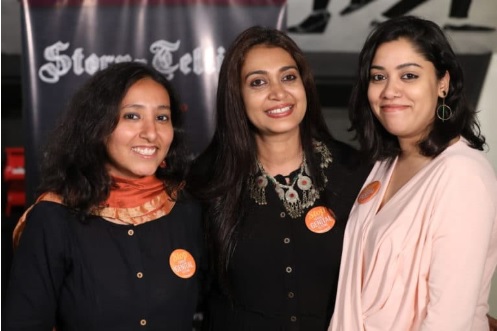
Leading human rights organisation Amnesty India has featured Sahiyo and WeSpeakOut — the two collectives working to end Female Genital Cutting in India — in its new campaign titled “Brave”. The campaign aims to highlight the work of individuals and groups working to defend human rights, truth, and justice in India, despite facing threats, attacks and other kinds of backlash. Other brave individuals featured in the campaign are: Chandrashekhar Azad, who founded the Bhim Army to fight for Dalit rights in Uttar Pradesh; Sagolsem Menor Singh, who campaigns for justice for the families of those killed in fake encounters in Manipur; and Gauri Lankesh, the journalist and human rights activist who was shot dead for her views last year. Sahiyo and WeSpeakOut have been recognised for raising their voices against a taboo topic: the ritual of cutting young girls’ genitals in the name of culture and religion. During the course of the year, the Amnesty campaign will help support and amplify Sahiyo’s work.
We did a project on FGC in college and learned our Bohra Classmates had undergone it too
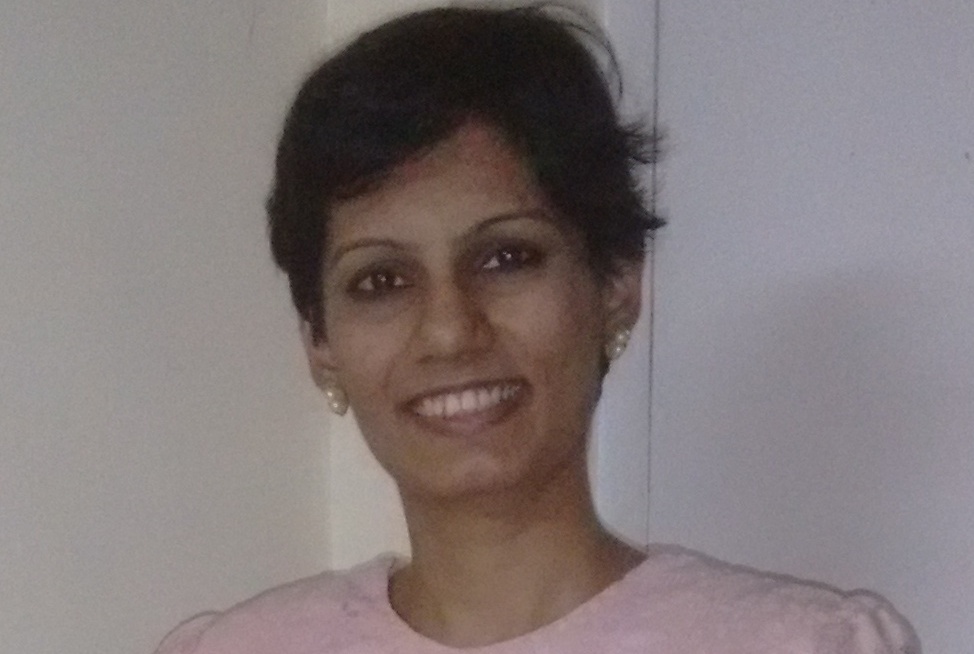
By Rachael Alphonso, Green Madcaps City: Mumbai, India I’m no fan of Vogue, so I was wondering what the face of a pretty African model, Waris Dirie, was doing on the cover of my favourite Reader’s Digest. ‘Desert Flower’, the title said. Her photo betrayed no sign of what she had suffered in her childhood – Female Circumcision or Female Genital Mutilation (FGM). ‘Circumcision’ – wasn’t it something only men had to undergo? How was it physically possible for women? And why? Having read the Bible and references to the Torah, I had never found any reference to women needing circumcision. So what was this all about? I read the article, “….a sharp stone…I felt the sting…my flesh was being torn away…no anaesthetic….” I couldn’t imagine the pain! Had it not been the Reader’s Digest, I would not have believed it! Because of her ‘circumcision’, menstruation for Waris was utterly painful. She could not have a steady flow which resulted in painful cramps. Soon, she was married to a man a few decades her senior who would have to tear open the skin over his wife’s vagina to be able to penetrate her during sex. Childbirth would be worse. I was stunned reading about it, and when my group in college was asked to do a project I was quick to gain support from my group to investigate this topic. We began our research. Our discussions and debates within the group, despite all efforts, became one-sided simply because we believed that nothing ever could justify the genital mutilation that Waris or any other girl suffered as a result of the circumcision. We could not find any medical or rational evidence that supported the idea. But the perpetrators of FGM continued to say it was done for the ‘benefit’ of the women and that women’s sexuality needed to be tamed. Men ‘simply fell for it’ [sex], and men could not control themselves, so women had to be controlled. We found this argument had taken different forms in different cultures, emerging into practices that control women and make them believe they are nothing more than their sexual organs, nothing more than a womb that bears children. We presented this topic to the rest of our class, and were proud of ourselves for doing so. Unconsciously, we also believed we were less affected by FGM because we also believed FGM could not happen in India. We were wrong. After our presentation we learned that many of our classmates were victims of ‘khatna’– a practice by which a piece of the clitoral hood is removed. Our classmate told us that the reason given by her religious leaders was that if a woman found pleasure in her sexual organs she would go on a rampant sexual orgy with anybody. Her sexual urges needed to be controlled so her morality was ensured. Their justification for khatna was also aligned with their belief that because men cannot control their sexual urges, women must remain covered and ‘decently’ dressed. The classmate who spoke of her own khatna and her cousin’s ‘khatna’ revealed that when they experience sex, they most likely would not be able to experience the clitoral orgasmand/or sex would seem slightly sensitive, but that’s all in terms of ill effects. She also informed us that nowadays, painkillers are used, and the procedure is done by a qualified medical professional. My group realized that she was made to believe that khatna was good for her, the harm nonexistent, as long as the cutting was done using the correct instruments and anesthetics.Later, we realized that many women may be traumatized by their experience but they are unable to speak about it, because they may not recognize they have a right to do so While Nigeria banned FGM in early 2016 – something that my presentation group and I heralded as a great move – we also learned that the Bohra leaders in India announced ‘khatna’ as a necessary part of their religion. The leaders claim it was meant for cleanliness, but to me, it is clear that the clitoris is in no need of surgical manipulation for cleanliness. What I find most interesting is that these ‘rules’ and ‘announcements’ were made by men (as the Bohra religious authorities are all men) who themselves do not possess a vagina and know little about the care of one. Millions of women have survived without undergoing khatna. My friends and I are among them. Then why are my Bohra sisters forced to believe otherwise? Who made these rules? Does the rule-maker have a vagina? (The original article appears on Green Madcap’s blog.) Rachael Alphonso is a life-long learner, a feminist and an environmentalist.
Sahiyo’s petition to the United Nations needs your help
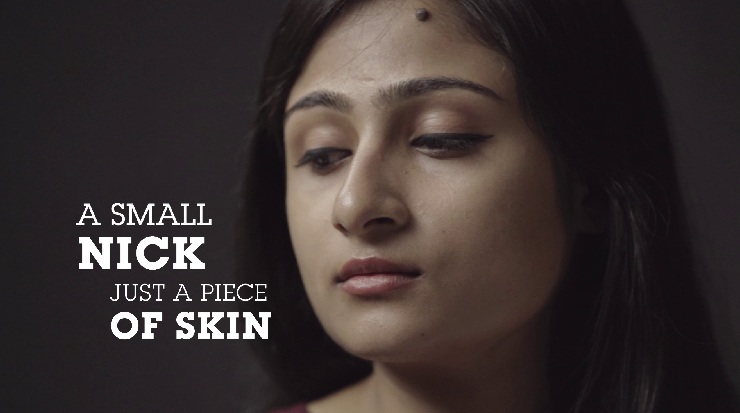
In December 2016, Sahiyo started a petition with Change.org to encourage the United Nations to invest in research on Female Genital Mutilation/Cutting in Asian countries. The petition proposes to end FGM/C worldwide by 2030, and Sahiyo needs the support of 7,500 petition signers to accomplish our goal. The United Nations reports that at least 200 million women have undergone FGM/C, but their data is mostly restricted to countries in sub-Saharan Africa. FGM/C is reported in many Asian, European, and Middle Eastern nations; however, there is a considerable lack of data from these countries, which means the global scope of the problem of FGM/C remains unknown. In the past year, cases of FGM/C in Sri Lanka, India, and other Asian countries have come into the light of the media and attracted the attention of government officials. The Indian Government’s Ministry of Women and Child Development told the Indian Supreme Court that there was no official data to support the prevalence of FGM/C in India. This ruling was a massive disappointment to activists and researchers who are working to bring more research and awareness to the prevalence of FGM/C in India and Asia. Asian countries have been excluded from the UNFPA-UNICEF Joint Programme to Accelerate the Abandonment of FGM/C. With more support for research initiatives, Asian countries can conduct research, bring further awareness to the issues within their countries as well as in the global context, and propose legislative change with qualitative backing. We need about 2,000 more signers to reach our petition goal. Click this link to help us advance our mission to eradicate FGM/C in Asia and worldwide! Help us spread the word by sharing our petition within your networks.
Storytelling with Sahiyo: Four actors narrate FGC survivor stories at a unique event
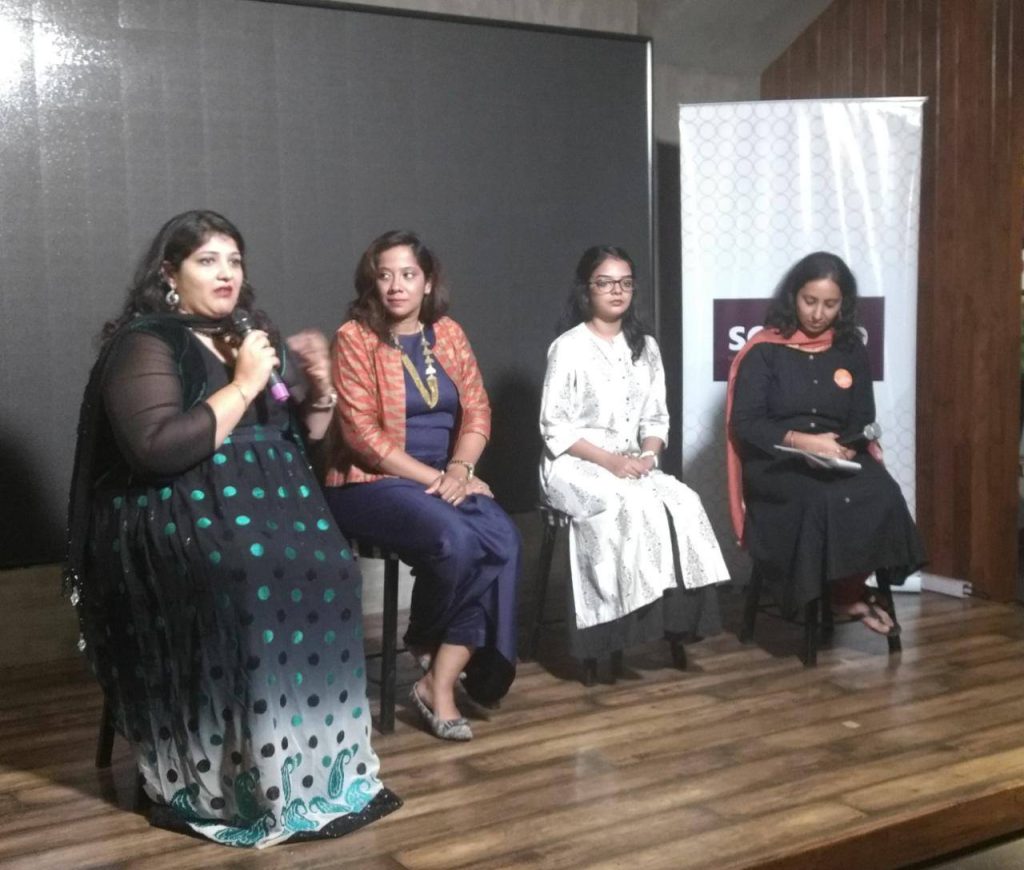
On March 16, Sahiyo partnered with Women in Film and Television International India to organise its first-ever on-ground storytelling event in Mumbai, India. The event, titled “Storytelling with Sahiyo”, featured four critically-acclaimed Indian film actors who performed narrative readings of the personal stories of four Female Genital Cutting survivors. The event was led and hosted by Sahiyo co-founder Insia Dariwala, along with WIFT founder Petrina D’Rozario. The actors — Rasika Dugal, Sobhita Dhulipala, Plabita Borthakur and Dolly Thakore — read the stories of survivors Fatema, Insiya, Samina and an anonymous mother who regrets getting her daughter cut. The stories highlighted the different ways in which FGC affects women who are cut and the difficult decisions that mothers often have to make when they are caught between tradition and the desire to protect their daughters. [youtube url=”https://youtu.be/b6V8Wu3RxDI”] After the emotional readings, which left some audience members in tears, three of the survivors present at the event were felicitated by the actors. This was followed by a panel discussion with the survivors, who talked about why they decided to share their stories and what kind of backlash they face in the community for speaking out. The event also included a second panel discussing Women and their Changing Narratives, in which women filmmakers Insia Dariwala, Priya Goswami, Petrina D’Rozario, Tanuja Chandra and Dolly Thakore discussed the mainstreaming of women’s issues through the medium of film.
Miti sitabi: Sahiyo hosts a special edition of Thaal pe Charcha in Mumbai
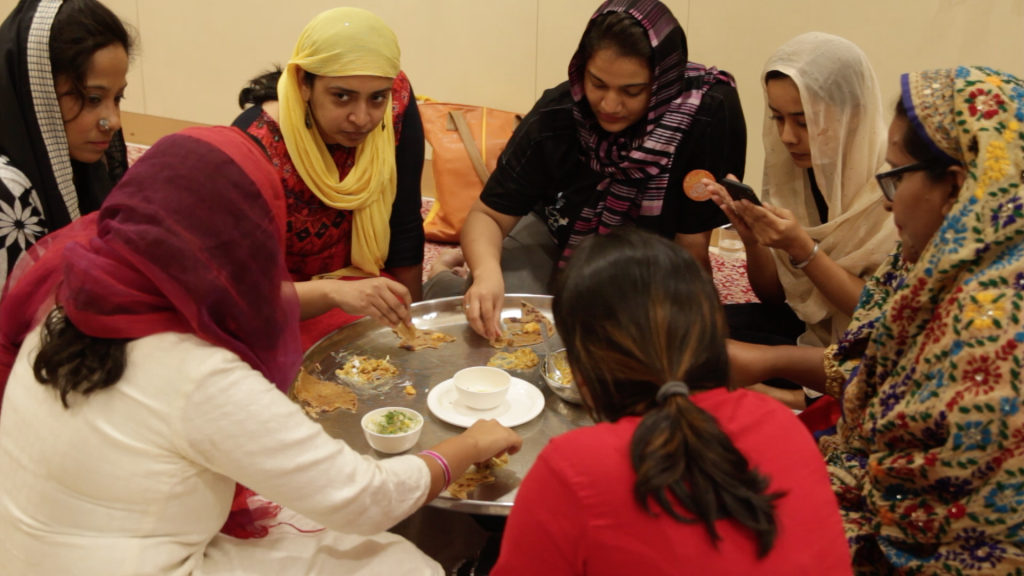
Sahiyo’s fifth Thaal pe Charcha event in Mumbai on April 7 was perhaps its most special one so far. On popular demand by the regular participants of the group, this Thaal pe Charcha was a miti sitabi — a special women’s meal hosted in honour of the Prophet’s daughter, Ma Fatema. At Sahiyo’s event, this special meal was hosted as a tribute to those Bohra girls who were not allowed to participate in miti sitabis if they were not circumcised. Thaal pe Charcha, which loosely translates as “discussions over food”, is a Sahiyo flagship programme that brings together Bohra women and men in a safe space to share their feelings, experiences and views on Female Genital Cutting or khatna, while bonding over traditional Bohra food. This programme began in February 2017 with a group of 16 Bohra women and now has more than 30 women and men associated with it. The April 7 Thaal pe Charcha had 21 of those participants, including five men. In fact, while there were two women-only thaals (traditional large dishes for seating 8 people) for the miti sitabi meal, this was the first time that a group of Bohra men had their own historic miti sitabi thaal. The meal began with traditional jaggery and roti, which is eaten at the start of every miti sitabi. At the end of the meal, participants completed the traditions by applying henna, perfume and small gifts with each other. The only tradition that this miti sitabi did not follow was that of khatna, of using khatna as a definer of who a true Bohra is and who gets to sit at special community thaal events. This miti sitabi was open to all. At the Thaal pe Charcha event, participants also shared stories about their journeys after they started speaking out about FGC. One participant, who was attending a Thaal pe Charcha for the first time, talked about how she resisted family pressure and managed to spare her younger daughter from the cut, even though she could not save her older daughter. Another participant shared her experience of having a khatna discussion with her father, who was convinced that FGC was mandated by the Shariat. However, after she had a heartfelt conversation with him, her father acknowledged the pain she had been put through and apologised to her. Participants concluded the Thaal pe Charcha with a lively discussion on other kinds of social norms, besides khatna, that patriarchal communities use to repress women.
